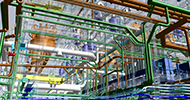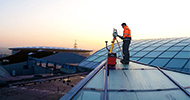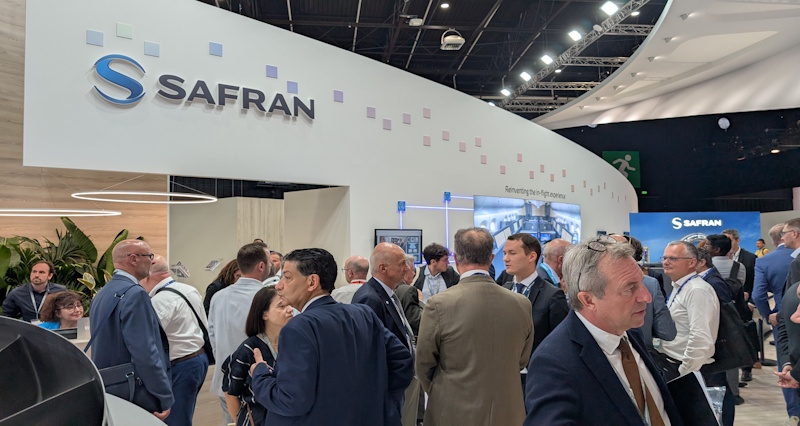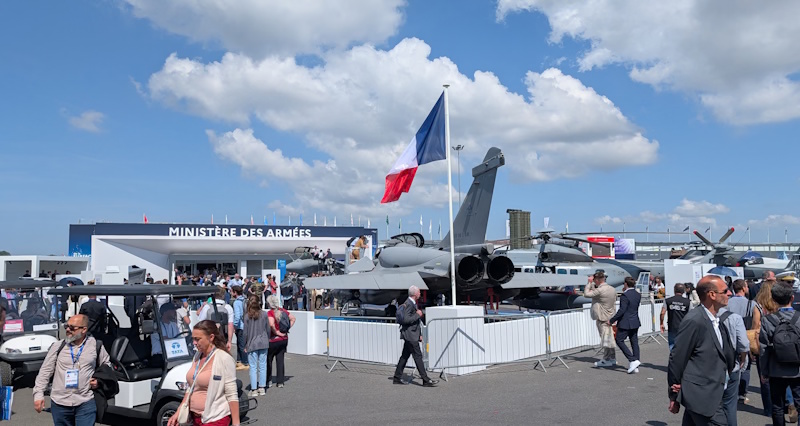During a hot and sunny June week, one thing was abundantly clear; there is no sign of any decline in desire for air travel at the Paris Air Show 2025. Demand has surged past pre-COVID levels, driven by business and leisure travel. However, backlogs are also at unprecedented levels, so it has been fascinating to see how the industry is looking to respond to these challenges.
But, in general, the mood was buoyant, and throughout the week there was a constant stream of healthy order announcements from the major aircraft manufacturers:
Record aircraft orders
During the week major European aircraft manufacturer Airbus announced $21billion in orders including a major deal with Indigo for 500 A320neo jets. Although only established in 2006, Indigo is India’s largest airline and also the second largest Asian airline. In the lead up to the show Boeing had experienced a strong May, with 303 new orders and rolling out 38 new 737 MAX jets showcasing improved production rate. At the same time, the company has said it expects demand to remain steady, with almost 44,000 new aircraft being required over the next 20 years resulting in a global fleet of 50,000 commercial aircraft by 2044, this sector continuing to outpace global economic growth.
Sustainable aviation push
Another area of the industry that was clearly visible as a driver of innovation, was the global push for more sustainable methods of propulsion. During Paris Air Show 2025, Airbus and MTU Aero Engines revealed a hydrogen fuel cell roadmap targeting 2035 for commercial deployment. This is a key indicator of the confidence in hydrogen as a critical component towards decarbonising aviation over the next decades. In another joint venture, French start-up Ascendance Flight Technologies showcased a hybrid-electric aircraft with 30% lower emissions and scalable modular design. This project combines the expertise from Daher, Safran, and Collins Aerospace, focusing on 6-seat and 10-seat aircraft.
Defence sector growth
An inescapable fact is that geopolitical tensions result in increased defence spending. This was clearly reflected at Paris Air Show this year. Show organisers revealed that 45% of the floorspace was dedicated to security and defence exhibits, a record for the event.
Systems to support mission-readiness, detection and logistics were highly evident in the halls this year. A stark reminder of the current turbulent times.
Innovation in aerospace manufacturing
There was of course a great deal of innovation on display at Paris Air Show. For example, in the field of composites, Hexcel demonstrated a 2-minute thermoplastic molding process. It involves a one-step forming and injection overmolding technology that utilises carbon fiber-reinforced tapes in conjunction with injection molding compounds. This approach enables the rapid creation of a fully formed, structurally complex component in less than two minutes.
Still on the subject of composites, while at the show, Fiber Dynamics and Fill GmbH announced a $40 million automated composites facility in Wichita, Kansas. This represents a step forward in reshoring manufacturing and firming-up the US supply chain. It provides automated manufacturing from fibre to fully-finished and inspected composite parts.
Supply chain disruptions
This push to make more resilient, less complex supply chains is widespread. Orders continue to ramp up. At the same time issues with supply of components such as engines and interiors make it more difficult for aircraft manufacturers to meet the demand.
In tandem with supply chain issues, the cost of materials is also generating concern. The number one driver of this is the U.S. tariffs on steel and aluminium. At the time of writing they are around 50%, increasing pressure on global sourcing and pricing.
Strategic shifts in manufacturing
While partners such as Hexagon are offering a wealth of technology to support players overcome these challenges, strategic shifts are required too. Walking the aisles at Paris Air Show, there were examples of ‘System-Level Optimisation’ which is a strategy to move beyond isolated fixes to integrate production strategies.
Many examples of automation on show at Paris Air Show will be able to support a strategy of ‘Zero-Based Redesign’, whereby an operation looks to rebuild its manufacturing processes from scratch to eliminate inefficiencies. Automating lower-value activities, engineers can be freed-up to focus on the high-value tasks that are not possible to automate.
And of course there were plenty of innovative software platforms across the halls at Le Bourget. A key way forward for the industry as it attempts to ramp-up productivity is to employ ‘Data-Driven Operations’. This will help leverage analytics to drive efficiency, reduce delays and improve cost control.
Your partner for aerospace
Hexagon technology goes in to the development and production of over 90% of aircraft. Our smart manufacturing solutions bridge the digital and physical worlds, empowering aerospace manufacturers. We can optimise every stage of the product lifecycle. From virtual testing and simulation to real-time production insights, Hexagon helps reduce development cycles and minimise costs. With our technology you can meet stringent regulatory standards without compromising on safety or performance.
Didn’t get to see the Hexagon stand this year? Here is a summary of our story for 2025:

















